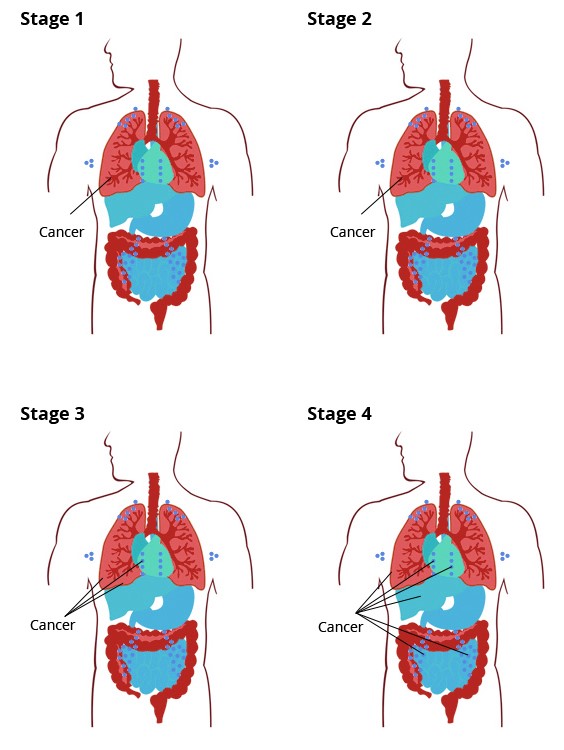TNM Staging System
Posted on Wednesday, April 6th, 2016 at 1:36 pm
The TNM staging system is a common staging notation system that describes the stage of a person’s cancer. The acronym describes specific factors relating tumors and the spread of the cancer.
- T – describes the size of the original or primary tumor and if nearby tissue has been invaded
- N – describes nearby or regional lymph nodes that are invaded by the cancer
- M – describes the presence of distant metastasis i.e. spread of cancer to other parts of the body
The TNM staging system is used to stage many different types of cancer. For mesothelioma, the focus is on size and extension of the primary tumor, the tumors lymphatic involvement and presence of metastasis to classify cancer prognosis.
TNM Staging System
Tumor – this describes the size and location of the tumors. There are eight categories of tumors in the TNM staging system:
- Tx – tumor cannot be evaluated
- T0 – no sign of a primary tumor
- T1 – mesothelioma is in the pleura lining the chest wall on one side of the chest. It may or may not affect the pleura lining of the diaphragm or space between the lungs
- T1a – tumor is limited to the same side of the chest where the primary cancer formed and the area between the lungs containing the heart, aorta, trachea, esophagus and thymus and diaphragmatic pleura
- T1b – the tumor has spread to the same side of the chest where the primary cancer formed and visceral pleura, along the area between the lungs containing the heart, aorta, trachea, esophagus and diaphragmatic pleura
- T2 – mesothelioma is in the pleura lining the chest on one side, pleura coating the diaphragm, the space between the lungs and the lung. It may grow into either the diaphragm or lung itself
- T3 – the mesothelioma has grown but may be removed by surgery. The tumor has grown in at least one of the following:
– The first layer of the chest wall
– The fatty tissue in the mediastinum
– The surface of the pericardium
– The deeper layers of the chest wall
- T4 – the mesothelioma has grown too far to be removed by way of surgery. It has grown into at least one of the following areas:
- More than one place in the deeper layer of the chest wall (ribs, muscles)
- The diaphragm and peritoneum
- Any organ in the mediastinum (trachea, esophagus, thymus)
- The spine
- Across the pleura one side of the chest
- Through the heart lining or into the heart itself
Nodes – this assesses whether the cancer has spread to lymph nodes or glands in the immune system. There are five categories of nodes in the TNM staging system:
- Nx – the nearby lymph nodes cannot be examined
- N0 – cancer has not spread to the nearby lymph nodes
- N1 – cancer has spread to nearby lymph nodes on the same side of chest with primary cancer
- N2 – cancer has spread to nearby lymph nodes on the same side of chest with primary cancer and/or subcarinal lymph nodes.
- N3 – cancer has spread to more distant lymph nodes including the contralateral lymph nodes
Metastasis – metastasis indicates whether the cancer has spread to other parts or organs in the body. There are three categories of metastasis in the TNM staging system:
- Mx – the presence of metastasis cannot be assessed
- M0 – the tumor has not spread to other parts of the body
- M1 – the tumor has spread to distant organs
TNM stage grouping

TNM Staging System – Cancer presence per stage
Stage I
Stage I is a combination of:
- T1, N0, M0
Stage 1a
This stage is a combination of:
- T1A, N0, M0
Stage 1b
This stage is a combination of:
- T1b, N0, M0
STAGE II
Stage II is a combination of:
- T2, N0, M0
STAGE III
Stage III is a combination of:
- T1 or T2, N1/N2, M0 or;
- T3, N0-N2, M0
STAGE 1V
Stage IV is a combination of:
- T4, any N, M0 or;
- Any T, N3, M0 or;
- Any T, Any N, M1